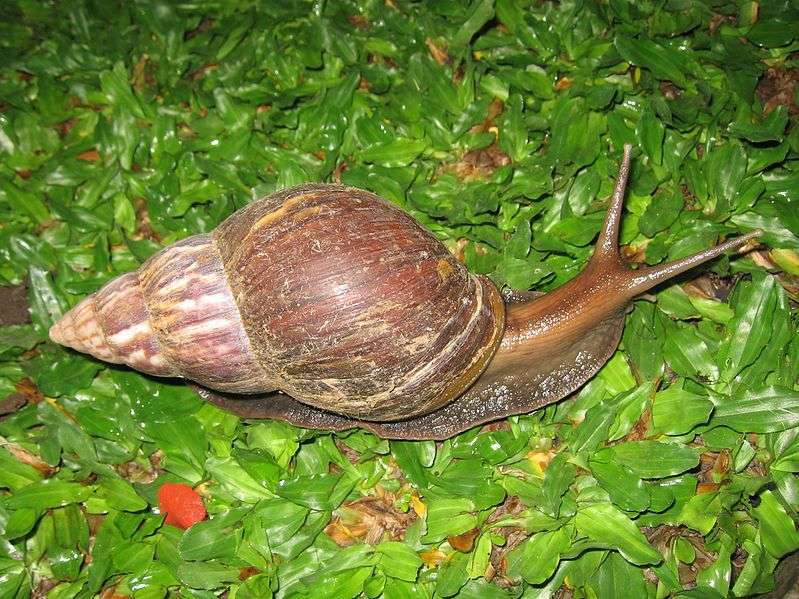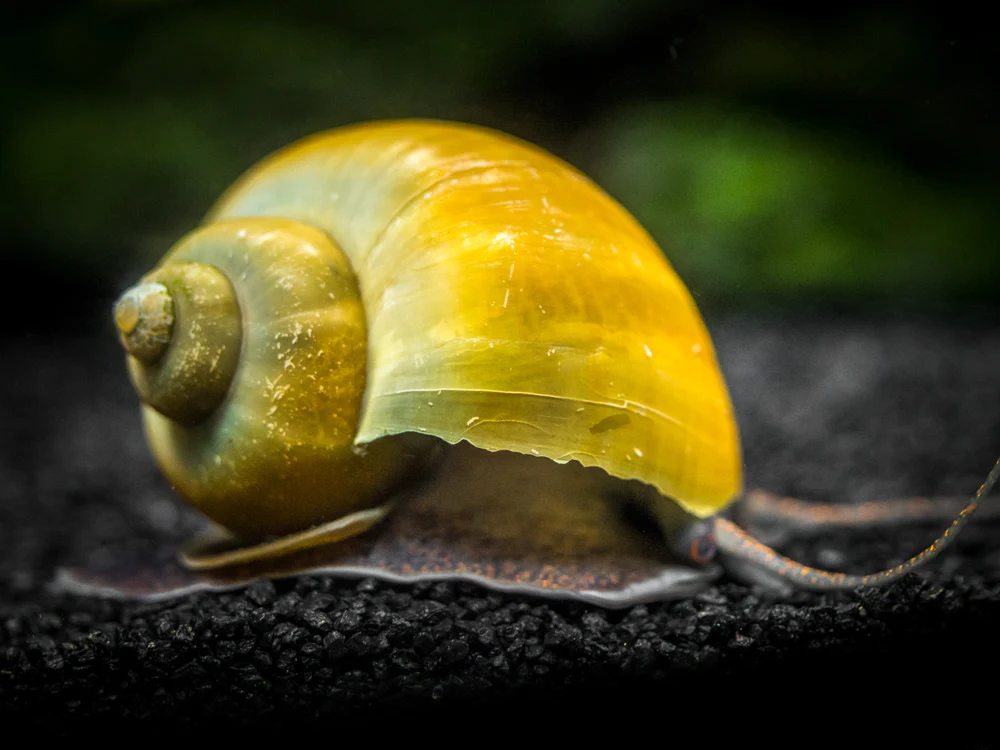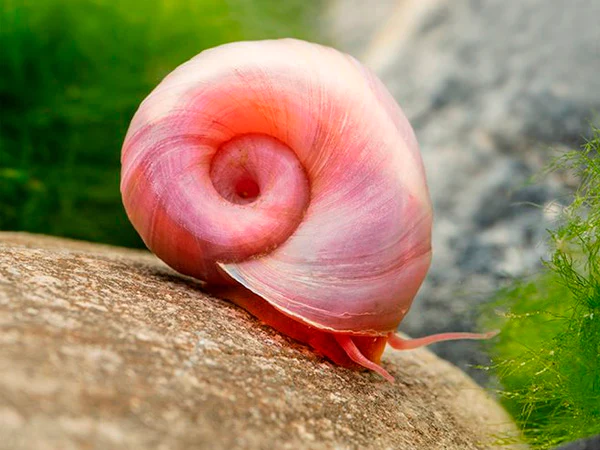
Description
Size: A Giant African land snail may get up to 8 inches long and is roughly the size of an adult human fist. It is the world’s largest land snail.
The shell has a somewhat flattened spire and a slightly pointed end. The shell’s surface is slightly glossy, and the margins are broad. Typically, the interior of the shell is a vivid golden yellow.
The body of the Lissachatina fulica is often brown or light grey in colour, and it also has a head with two feelers. The snail’s body is smooth on the exterior and covered in mucus. The snail’s ears are two little, flea-like appendages on the rear of the head that are situated between the eyes and tentacles.
Origin
This species, which originally came from Kenya and Tanzania, is now common in many countries, including Ethiopia, Madagascar, Somalia, Morocco, Ghana, and many others. They are regarded as a nuisance in any country where they have been unintentionally introduced.
Behavior
Although they are larger than the garden snails you may have seen outside, giant African land snails are similar to other snails in that they are silent and sluggish moving. Despite the harm they can inflict, these snails do not bite; however, if you handle them, wear gloves because they may carry harmful bacteria. Due to their nocturnal nature, they are active and eat at night.
Keeping as Pet

Habitat
Giant African Land Snails can be kept in a variety of habitats, including glass tanks as long as the roofs are low. Plastic tanks are another good choice. The ideal alternative is to use coir substrate, which can be purchased loose or in compact brick form. The substrate must have adequate depth for the snail to completely bury itself.
A fall onto a hard surface could harm or even break a snail’s shell because they are particularly prone to falling off the top of the enclosures. Sphagnum moss is a wonderful idea to put in the enclosure because it will help the humidity levels.
One of these huge snails is best kept in a 10 gallon aquarium with a screen top to prevent it from climbing out and to allow for ventilation.
Water Conditions
A humid atmosphere is preferred by giant African land snails. The optimal conditions for Lissachatina fulica are 70 to 78 oF, a pH of 7.0 to 7.3, and a hardness of 4.
Diet and Feeding
These snails should always have an abundance of fruits and vegetables available because they have large appetites. To support the health of their shell, you can sprinkle calcium powder on their meal, or you can put a cuttlebone in the enclosure. To stop mold from forming, food that is not eaten within 12 to 24 hours should be thrown out. Additionally, clean water should always be accessible in a few dishes or a small, shallow dish.
Tank mates
Giant African Snails can be housed with other varieties of snails, such as Mystery Snails or Apple Snails. They can also be housed with small bottom feeders like Nerite Snails, Ghost Shrimp, Amano Shrimp, and algae-eating shrimp.
Table





